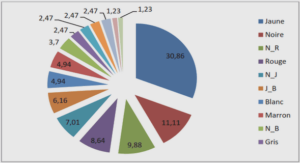ECLARATION OF SENTIMENTS AND RESOLUTIONS (1848)
The Revolutionary War of Independence
The American Declaration of Independence originated from the glorious war of independence between the British crown and the thirteen American colonies that later formed the United States of America. In fact, the leaders of the thirteen colonies declared a war to King George III after having endured many exploitations and wrongdoings from British Crown. Indeed, the British crown wanted to profit from the colonies and tried a way to exploit them in order to pay off the huge debt it owes in the French and Indian war (1755-1763). For the British to tax the American colonies would help compensate the costs of the war. The first tax strategy started with the Sugar Act, a tax passed in 1764 that placed a tax on sugar. But colonists organized protests against this tax law under the direction of Samuel Adams. Then the law was repealed in 1766. After this, the Stamp Act was also passed in 1765, placing tax on legal documents (marriage licenses and wills), tax on newspapers… like the Sugar Act, the Stamp Act also created protest and boycott of British goods. As a result the colonists started to get united in order to denounce the exploitation from the Great Britain. However the series of protests and boycotts did not stop the British to continue its law of taxation on the colonists. Another Act called the Townshend Acts was passed in 1767, and intended to tax goods like glass, papers, lead, paint and tea. A reaction to the Townshend Acts was followed by the Boston Massacre in 1770, where soldiers fired into the crowed and killed several protesters. Many other events prevent the colonists from trusting the British Crown. The Boston Tea Party of 1773 was the consequence of the Tea Act the British tricked on them again. When the British West India Company started to be jealous about the benefit made by the American tea merchants it felt some troubles and decided to pass a tea Act in which the company could sell tea directly to the colonies without the intermediary of American Tea merchants. The latter showed their disagreement by destroying the cargo of tea into the Boston Harbor. The British decided to put Intolerable Acts including the closing of the port of Boston, the interdiction of Massachusetts colonists to hold town meetings, a quartering Act that required colonists to house British troops in their homes. In a nutshell they were heavily taxed and they had no voices on the British parliament. As the colonies’ famous saying goes «No taxation without representation” they were in strong need of members of parliament who could defend their interests. But the stubbornness of the British Crown to accept the colonies’ grievances led to a fierce feeling to get independence of the Great Britain. In addition, the most immediate reaction against this injustice was the colonies strong need to get free from Great Britain. It was the only prompt solution they saw to claim their rights. So fifty-six delegates from the thirteen colonies met in Philadelphia in a continental congress in 1774 and created their own national parliament, and then in 1775, the congress declared that they were independent from Great Britain. But the idea of independence was also accompanied with the influence of many foreign as well as well as American philosophers and writers. It was the case of John Lock in his Second Treatise on Government, Thomas Paine and his famous book entitled Common Sense… After gaining independence, social impacts began to derive from the American Revolution. The ideas of Liberty, Republicanism and Independence were at the heart of social issues. Unlike the – 10 – other Revolution, the American Revolution was a hope for radical changes in the United States. The abolition of slavery and women’s rights were expected to be satisfied in the new constitution of the new United States. As far as women’s question is concerned their grievances in order to be included in the new constitution could be seen as a just request. For, women had played an important role during the war. With the absence of men, during the war period, women became involved into political affairs hence their nomination of “Republican Mothers” Indeed, during the war years, women became incorporated, unavoidably in the turmoil and conflict of public events. Feeling a natural need to show their patriotism, women played diverse roles in the war time. Women began to provide public services as well as enlarged domestic responsibilities as camps followers, petitioners, nurses and fund-raisers. The latter were qualified as the most modern roles adopted during the war. For Washington raising money for the cause was what he appreciated in women’s help. In 1781, when he congratulated The Ladies Association of Philadelphia, he awarded its members ‘’an equal place with any who have preceded them in the walk of female patriotism.” He argued that “by proving that the love of country is blended with those softer domestic virtues, which have always been allowed to be more peculiarly your own.” To raise funds for the cause, women formed an association in 1780 that would attract core of prominent, well-off local women including, for instance, the wife of the state’s chief justice. They planned to collect from women and girls the money that would no longer be spent on extravagant clothes and to donate this sum to the rebel army. Devising the city into districts, the women visited every home in pairs and amassed a substantial sum for the cause. A few among women became male impersonator and took part in the battle, it was the case of Deborah Sampson Gannett who enlisted in the fourth Massachusetts Regiment and eventually received a pension for her service. This fierce participation of women during the battle, questioned where was the difference of sex? However the Revolution has changed many things in women traditional belief. Women needed to be considered with more interests. The Revolution had brought some changes from the hierarchical mode of traditional marriage to modern views of relationship between husband and wife. Marriage became a set of sympathy, esteem, affection, friendship and mutual obligation “the tyranny of the domineering patriarch and the obedience of the servile wife would now be replaced by complementarily, mutuality.” .
The Industrial Revolution
The American Industrial Revolution as in the other parts of the European areas was a new age of technological progress and commercial advancements. The industrial Revolution brought improvements in fields such as transportation, communication technologies, electricity, steam power… With the increase of production the need of manpower became crucial. This era of economic development coincided with the eighteenth century until the early nineteenth century, known as the age of Reason, enlightenment period. In this period, philosophers and many writers influenced traditional thoughts and brought many changes. As long as women’s rights question is concerned, the rational thinking helped them to push their equal rights demands. So, the women’s sphere and men’s sphere tended to become one. The development of Industrial Revolution draws women from their traditional occupations and enabled them to go outside the house. But the question of inequality still exist, as it is said “ Industrialization far from emancipating women led to a contraction of some of their traditional functions in the economy- to a degree from which they have yet fully to recover8.” Women were given the lower jobs which seem to be domestic- textiles, stitching, washing…Hence the question of unequal pay. In addition, women’s participation in economic sphere had known a little advancement since the civil war and World War I. Their unconditional help during the wars enabled them to realize and demystify the male domination society. In fact the civil war like the American war of independence affected the life of women. After the recovery from the wounds of the wars, around a half century following it, industrialization began to take place with the advancement of technology, new jobs opportunities in factories and offices, and also a rapid growth of the population between 1860 and 1910. The most visible participants in the paid labor were middle-class women, immigrants and the freedwomen even though they did not share the same experience. There was, indeed, a large distinction between white women and black women. The black women had more experience in the labour field. They were accustomed with this experience on bondage whereas for white women especially those married who lived in the cultural ideal of taking care of their families. But nothing had almost changed in black women’s works. It still remained in the domesticity-washing, ironing, cooking. Some changes only occurred after the Reconstruction era where black women started to integrate the paid labour force; still their jobs in industry, or sharecropping were similar to the work during slavery. Besides, white women’s jobs also in factories seemed to relocate the household work in industries. Sewing, spinning, weaving or brewing were the major activities of women as their main jobs, was centered in garment. Apart from industrial works, women occupied some clerical work and teaching. Though these jobs were still feminized women did not have another choice. Men still keep all the profitable opportunities.
Women’s commitment for changes in the United States.
Women’s Abolitionist Movement.
In the United States, women’s request for Equality and slaves ‘grievances for freedom were at the heart of political, social and economic issues. At times it was impossible to separate abolitionist cause and women’s right demands. Because their demands were almost the same and based on the strong words of the Declaration of Independence which seemed to guaranteed liberty, democracy, justice for all US citizens. But slaves and women were not satisfied, in this statement that “all Men are created equal”, the slaves fought to be considered as “MEN”, as real “Human Beings” if these words included God’s creators black men as well as while men. In the other hand, women required to be include in the Declaration of Independence, for them “all Men and Women are created equal”. At first, women’s sensibility could not bear the ill treatment that black people endeavor; they fought with male abolitionists to denounce the atrocity of bondage. The abolitionist cause enabled women enter the world of public affairs, activism. Their experience like Quakers activists in benevolence, reformers taught them to apprehend the world of human rights advocates. An important number of abolitionists were Quakers who originated from the seventeenth century. In fact, the most remarkable changes that occurred in the seventeenth century included women’s roles in Church. The latter constituted the only social institution in which women could participate and become “Active Members”. So, beyond the family concerns, church membership enabled women enter into religious community. Meetings organized weekly or on Sundays, helped women escape from the limited domestic works. Once in the church women could enjoy equal access to intimacy with God or equality of souls. They believed that there is no inferiority in the field concerning religious affairs. Their objective was “To liberate for the service of the Church the gifts of government which lay dormant and barren in both men and women.” 10 The most important services women conducted, turned around the organization of discussion, the management of finances, the training of younger members… But in the 1830s and 1840s, women’s activities further intensified and began to involve in what they called at the times «Moral Reform”. Moral reformers intended to change social ills through charitable works and also the rebirth of basic education about behaviors and thoughts. Then, years later, they stated to undertake more radical causes. So, some members of Boston Society and the maternal society movement belonged to the Boston Female Antislavery Society found in 1832. But belonging to the abolitionist trend was not without risk. Abolitionist Quakers often dropped their church meetings and devoted themselves to the abolition cause. As a result they could lose their reputation and risk social ostracism. It was the case of some of the early abolitionist women like Lydia Maria Child who faced many troubles in defending slaves. When Child published an Appeal in Favor of That Class of Americans called Africans, in which she denounced slavery and requested racial equality; the sales of her book became unsuccessful.
INTRODUCTION |






